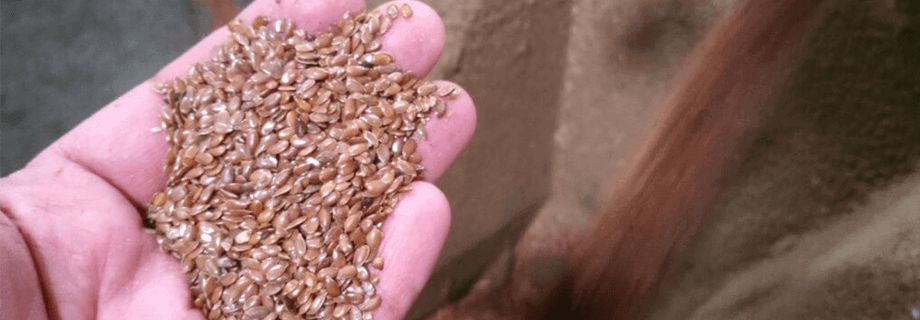Mechanical Extraction of Oil from Flaxseeds – Quality Meal and Stable Oil

I recently blogged about the use of Insta-Pro Intl– extruded flaxseed as a way to push conversion of more long-chain, omega-3 fatty acids with less flax. When flax is included in livestock diets, some of the α-linolenic acid (a shorter-chain omega-3 fatty acid) is converted to potent long-chain, omega-3 fatty acids – omega-3’s that produce most of the health benefits (for example, see here). When an extruder from Insta-Pro Intl was used on flax before feeding, the omega-3 fats in flax were more available to the animal for the production of long-chain, omega-3 fatty acids. Thus, healthier animal food products were produced.
In the Insta-Pro Intl R&D center,we have experimented with flaxseed using extrusion combined with our mechanical oil presses. For oilseed crops with over 30% oil content, we typically recommend our Press-ExPress ® process (read more here), but we have also been experimenting with improved methods. The purpose of the oil pressing is to remove some of the flaxseed oil, leaving behind protein-containing meal with some residual oil. The meal can be used as an ingredient in livestock diets and it can be ground into a flour for human food applications – provided that it was produced in a food-grade facility. In our experiments, the resulting flaxseed meal contained about 40% protein and 8% oil in the meal.
As for the isolated oil from flaxseed, it can serve as a concentrated source of α-linolenic acid for feed and food (again, assuming all appropriate rules and regulations are followed) purposes.
One quick note on oil stability – flaxseed oil contains high levels of α-linolenic acid, which is inherently unstable. As such, precautions are often taken, including isolating the oil in temperature and light-controlled rooms, cooling the oil after isolation and having carefully-designed and controlled storage areas. When high-shear extrusion from Insta-Pro Intl is used, however, the lipolytic enzymes that aid in oil breakdown are deactivated, moisture is flashed off and the naturally-occurring, stabilizing tocopherols in flax are released. All of this will encourage stability in both the oil isolated from flax, and the residual oil in the flaxseed meal. However, it is always a good idea to have shelf-life studies conducted on anything prone to oxidation and rancidity in order to better understand your process.
To learn more about the study or to use our research facility to conduct a test specifically designed for you, contact me, Dave Albin or Nabil Said.

